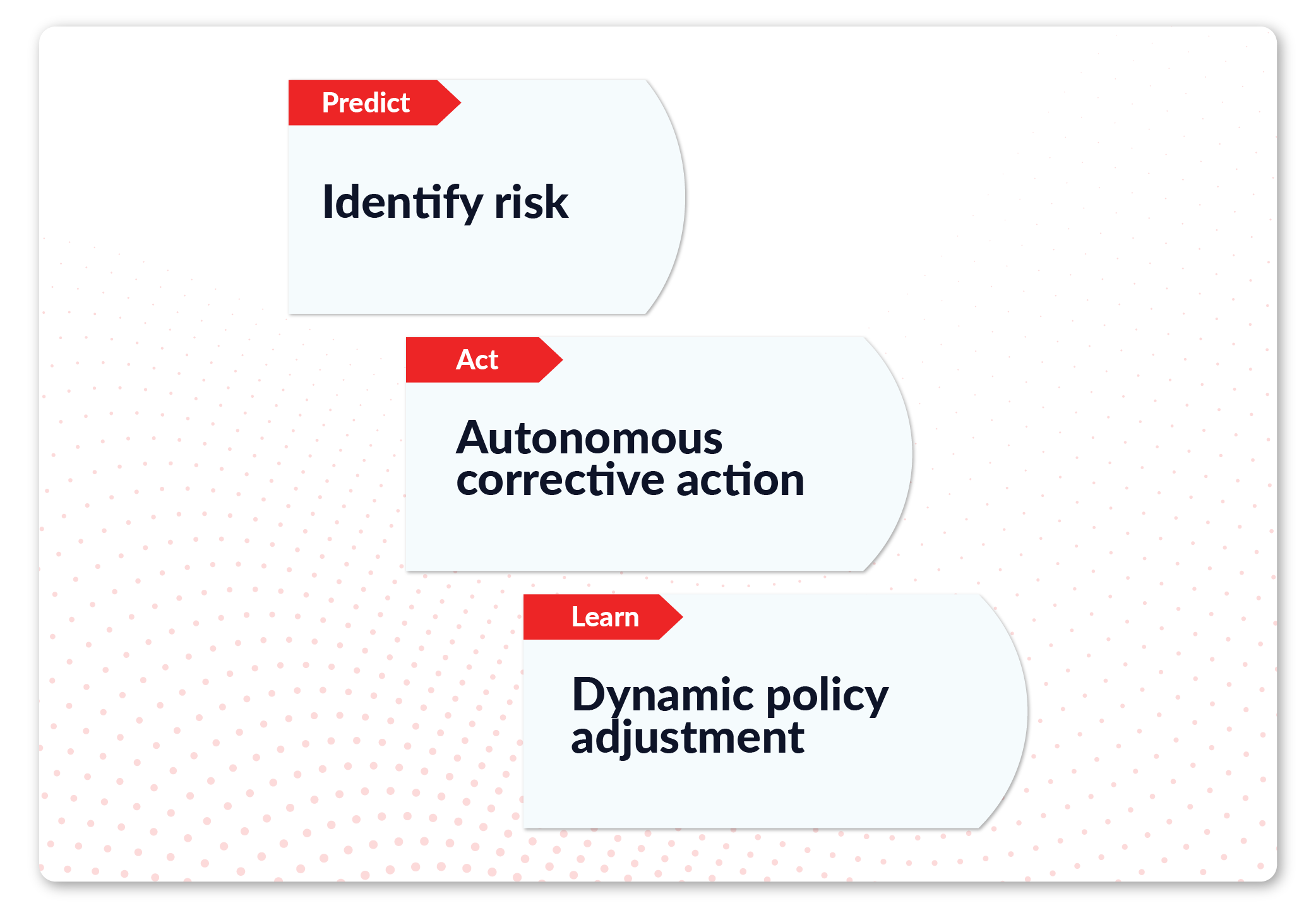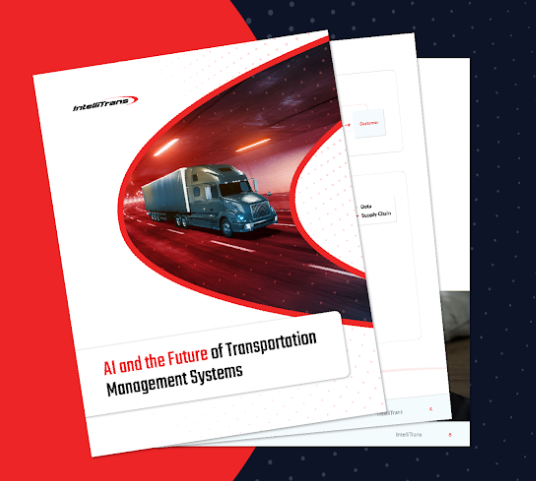AI and the Future of
Transportation Management Systems
The AI Playbook for Logistics: Faster Deliveries, Lower Costs, Better Decisions
The era of reactive supply chains is over. Artificial intelligence is transforming logistics with intelligent control towers, real-time adaptability, and automated decision-making.
This report explores three major shifts reshaping transportation management: AI-powered control towers that replace static supply chains with dynamic, fully connected networks; adaptive neural models that continuously refine routes, capacity, and costs; and a shift from reactive problem-solving to proactive exception management, preventing disruptions before they happen. The impact? Companies leveraging AI-driven logistics are cutting empty miles by up to 41%, improving asset utilization by 30%, and resolving supply chain disruptions nearly twice as fast.
AI isn’t just improving logistics—it’s rewriting the rules.
Here’s what we’ll cover
- Section 1: Control Towers and the Data Utilization Gap
- Section 2: The Displacement of Rules-Based Automation
- Section 3: The Emergence of Management by Exception 2.0
- Section 4: Revolutionizing Logistics
- Section 5: Next-Gen TMS: Building Blocks of the Future

Section 1: Control Towers and the Data Utilization Gap
Modern supply chains generate vast amounts of data, but legacy TMS platforms struggle to keep up with the volume and complexity. As a result, 68% of transportation data goes unanalyzed, and 92% of exception management still relies on human intuition.
Control towers, powered by AI, solve this problem by centralizing and contextualizing data, enabling real-time decision-making.
This shift transforms fragmented supply chains into adaptive ecosystems, enhancing agility and resilience while bridging the gap between digital intelligence and operational action.
Section 2: The Displacement of Rules-Based Automation
For years, TMS platforms relied on extensive rule sets to manage complexity, with some systems housing over 5,000 conditional rules. However, when disruption hits, these rigid systems struggle—taking 42% longer to reroute freight compared to human planners.
This highlights the flaw of rules-based automation: it doesn’t scale with chaos. As environments grow more complex, these systems become fragile and costly to maintain, creating what’s known as the “automation trap.”
To stay competitive, companies need adaptive, AI-driven systems that can learn and evolve under pressure.


Section 3: The Emergence of Management by Exception 2.0
Traditional management by exception is reactive, only addressing issues once they’ve occurred.
Today’s supply chains demand foresight, which is where Management by Exception 2.0, powered by agentic AI, comes in. This advanced system predicts disruptions before they happen, autonomously takes corrective actions, and learns from every scenario.
Key capabilities include causal inference engines that detect disruptions in advance, AI-driven autonomous decisions within risk thresholds, and dynamic policy adjustments through reinforcement learning.
The result is a proactive, intelligent exception management system that improves performance and reduces human workload, with companies reporting significant improvements in delay reduction and cost control.
Section 4: Revolutionizing Logistics
AI is shifting supply chain economics from marginal cost minimization to a model where more data leads to zero or even negative marginal costs. Agentic systems continuously improve through each transaction, making optimization a utility via cloud-based services like ETA prediction and carrier selection.
Meanwhile, next-gen TMS platforms are evolving from tools into integral systems that connect and coordinate entire industries, creating powerful network effects. By integrating deeply and offering 360-degree visibility, these platforms not only set industry benchmarks but also improve with each transaction, reinforcing their dominance and transforming logistics into a self-optimizing ecosystem.


Section 5: Next-Gen TMS: Building Blocks of the Future
The future of TMS software is evolving beyond incremental updates, with a shift toward more intelligent, connected, and autonomous systems.
Key trends shaping this evolution include API-first strategies for agent coordination, paradigm shifts toward collaborative ecosystems, and AI-powered process automation for real-time monitoring and proactive problem management. Custom APIs and agent-driven architectures will enable seamless data exchange, while hybrid AI infrastructures ensure fast, real-time execution.
This transformation will create agile, resilient systems designed to meet the demands of next-gen supply chains.

Download the Full Report
AI isn’t just optimizing logistics—it’s transforming how supply chains work, turning disruption into opportunity and rewriting the rules for good. Experience the future of supply chain with IntelliTrans.

